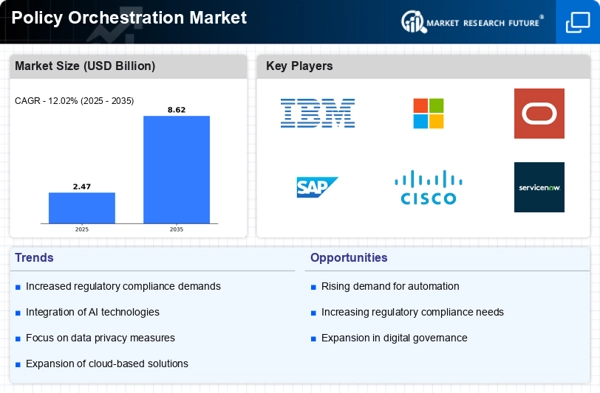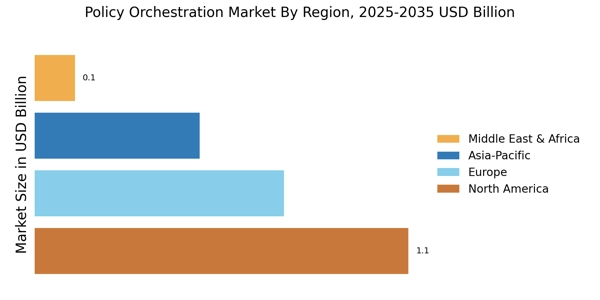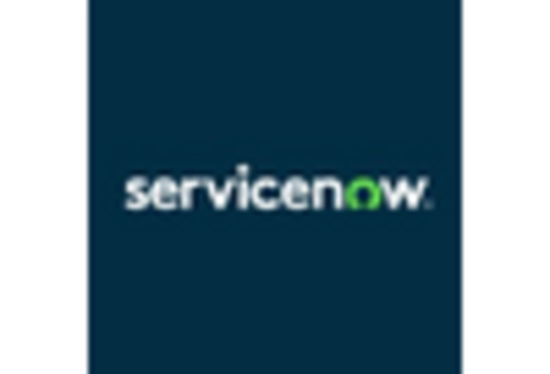Collaboration Across Sectors
Collaboration across various sectors is emerging as a key driver for the Policy Orchestration Market. As public and private entities recognize the benefits of working together, there is a growing need for orchestration solutions that facilitate inter-agency and cross-sector collaboration. This trend is particularly relevant in addressing complex societal challenges, such as climate change and public health. By leveraging policy orchestration tools, organizations can align their efforts, share resources, and implement cohesive strategies. The increasing emphasis on collaborative governance is likely to propel the demand for orchestration solutions, fostering a more integrated approach to policy management.
Rising Demand for Efficient Governance
The increasing complexity of governance structures has led to a rising demand for efficient policy orchestration solutions. As governments and organizations strive to enhance their operational efficiency, the Policy Orchestration Market is witnessing a surge in interest. This demand is driven by the need for streamlined processes that can effectively manage diverse policies across various sectors. According to recent estimates, the market is projected to grow at a compound annual growth rate of approximately 12% over the next five years. This growth indicates a significant shift towards adopting orchestration tools that facilitate better coordination and implementation of policies, thereby improving overall governance.
Technological Advancements in Policy Management
Technological advancements are playing a pivotal role in shaping the Policy Orchestration Market. Innovations in software solutions, particularly those leveraging artificial intelligence and machine learning, are enhancing the capabilities of policy management systems. These technologies enable organizations to analyze vast amounts of data, predict outcomes, and automate decision-making processes. As a result, organizations are increasingly investing in these advanced solutions to improve their policy orchestration efforts. The market for such technologies is expected to reach a valuation of over 5 billion dollars by 2026, reflecting the growing recognition of the importance of technology in effective policy management.
Growing Importance of Data-Driven Decision Making
The growing importance of data-driven decision making is reshaping the Policy Orchestration Market. Organizations are increasingly relying on data analytics to inform their policy decisions, leading to a demand for orchestration tools that can integrate and analyze diverse data sources. This trend is particularly pronounced in sectors such as education and urban planning, where data insights can significantly enhance policy effectiveness. As organizations seek to harness the power of data, the market for policy orchestration solutions that support data integration and analysis is expected to expand. This shift towards data-centric approaches underscores the evolving landscape of policy management.
Increased Focus on Compliance and Risk Management
The heightened focus on compliance and risk management is significantly influencing the Policy Orchestration Market. Organizations are increasingly required to adhere to stringent regulations and standards, necessitating robust policy orchestration frameworks. This trend is particularly evident in sectors such as finance and healthcare, where regulatory requirements are constantly evolving. As a result, companies are investing in policy orchestration solutions that not only ensure compliance but also mitigate risks associated with policy implementation. The market for compliance-oriented orchestration tools is projected to grow, indicating a strong alignment between regulatory demands and policy management strategies.


















Leave a Comment